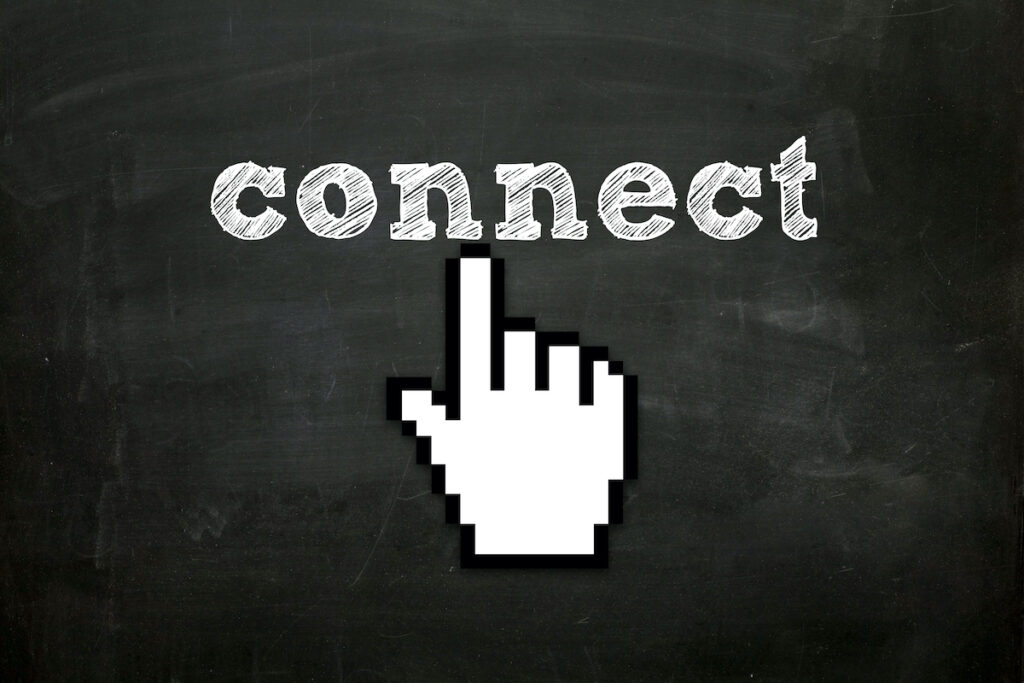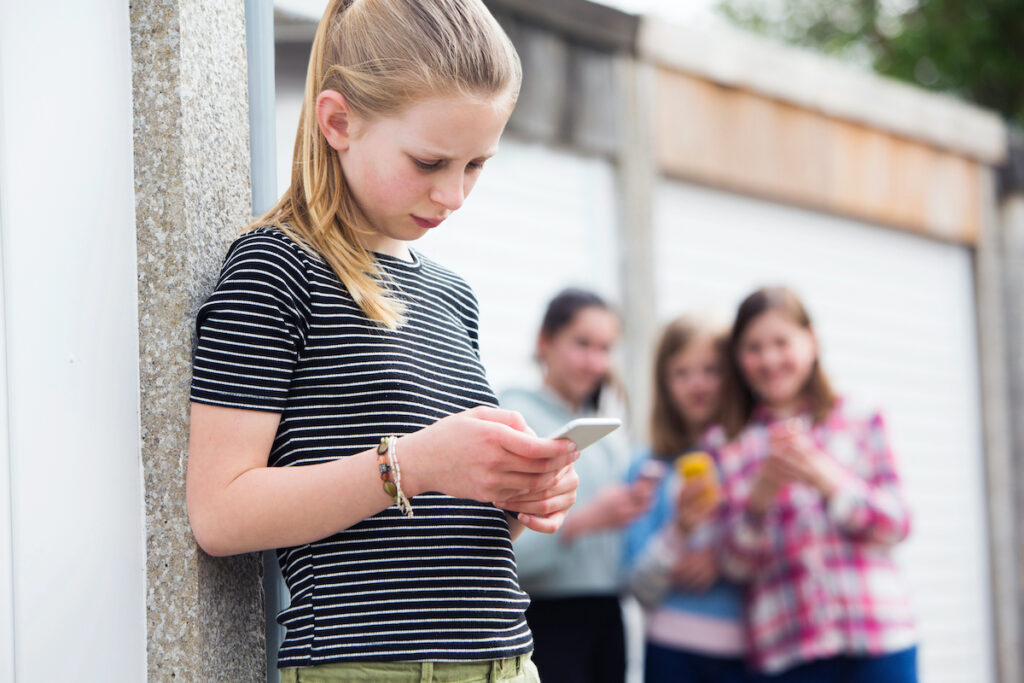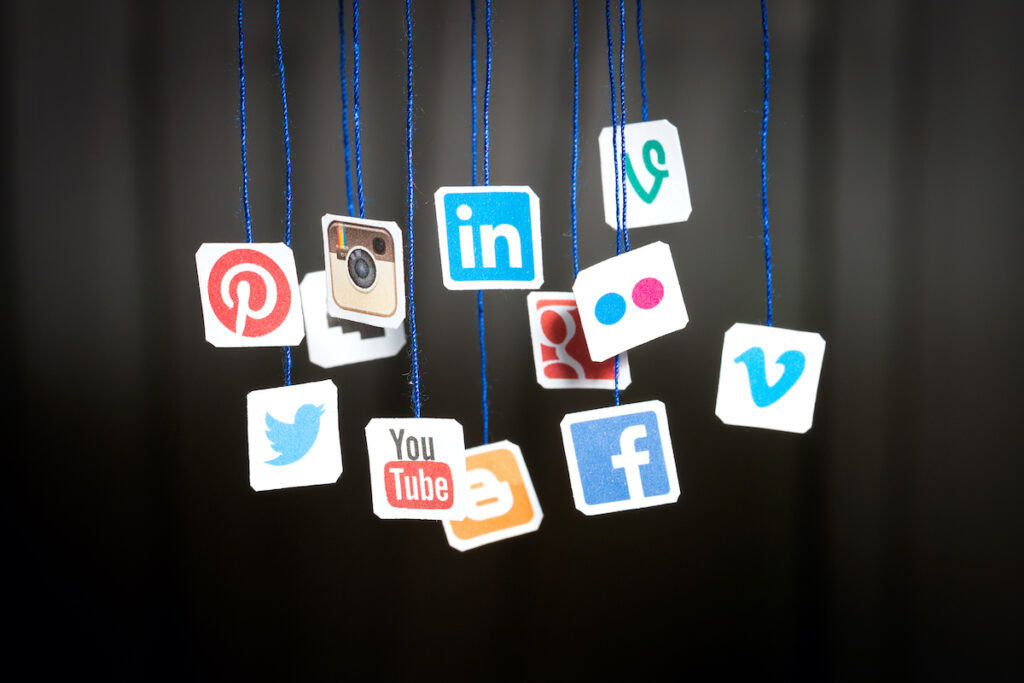
Social media is defined as any type of media that includes interactivity between its users, it encompasses a wide variety of forms, including (but not limited to) email, text, blogs, games, and social networking sites (SNS). Since the introduction of social media apps on smartphones in 2012, it has become an ubiquitous force in society today, with surveys suggesting that over 90% of UK 14-year-olds use it (Kelly et al., 2019).
This coincides with corresponding increases in adolescent suicide both in the UK (Bould et al., 2019) and the US (Mirion et al., 2019). However, whether this reflects a true increase in population prevalence, or purely a result of other factors such as better recognition of mental health difficulties, remains unclear.
Thus, there remains an ongoing debate on the differential impact of social media on mental health. Studies summarised by Mental Elf suggest potential positive and negative outcomes for the adult population. Concerns surrounding adolescents are similar, though with emphasis on such areas as the decrease in face-to-face interaction, and risks like cyberbullying. While recent systematic reviews have found a “general correlation” between social media and depression, there were also conflicting findings, and a limited quality of evidence found.
Vidal and colleagues (2020) in their recent review aimed to answer the question: what is known about the association between social media use and depression/suicidality in adolescents?

Studies suggest over 90% of youth today use social media. Could this be linked to the ongoing increase in suicide rates?
Methods
A search string was created, comprising terms grouped under headings:
- Type of internet use: e.g. ‘digital gaming’, ‘social media’
- Social networking site: e.g. ‘instagram’, ‘social apps’
- Mobile use: e.g. ‘mobile phones’, ‘sexting’
- Symptoms, behaviours and disorders: e.g. ‘depression emotion’, ‘suicide’, ‘addiction’
- Adolescents: e.g. ‘middle school’, ‘teenager’
The researchers investigated only one database, PsycInfo on 5th June 2019. Inclusion criteria were developed to include studies examining the association between social media and depression/suicidality in adolescents (majority of participants 10-18 years old). Both qualitative and quantitative articles were included.
Results
722 unique articles were found in the initial search, of which 42 were included in the final analysis. The results came from around the world, though the vast majority came from European countries (16) and the USA (14). These were grouped into the four themes below.
Quantity of social media use
- There was some evidence of an association between frequency of use and presence of suicidal ideation/attempts. These studies included both cross-sectional and longitudinal designs, each using different markers of frequency of use (e.g. by number of social media accounts or frequency of engaging with online content). However, a smaller number of studies did not find this, some in fact reported positive associations, such as moderate, stable trends in social media use being associated with better emotional self-regulation.
- There was some evidence that depressive mood could affect one’s ability to regulate social media use; potentially indirectly via the “Fear of Missing Out” (FOMO) phenomenon.
- Unsurprisingly, addictive patterns of internet use were also associated with negative outcomes, such as emotional misadjustment and depressed mood. Mediating factors for this were suggested as rumination, insomnia, night-time-specific social media use, and cyberbullying. There was conflicting evidence on whether females who had lower self-esteem and depressive symptoms could be “at risk” of such internet use.
Quality of social media use
- There was some evidence for depression being associated in certain types of use, such as public or passive use as opposed to private or active. Conversely, information-searching on the internet was found beneficial.
- Two studies provided evidence that social comparisons made through social media were associated with depressive symptoms, even after controlling for several factors. Social comparison was assessed by a questionnaire that asked about motivations behind a variety of behaviours, e.g. “I often post a status update if I think it will make others think I am funny, nice, or cool.”
- Interestingly, a qualitative study saw adolescents describe using social media to seek out social connection as positive. They too agreed that there was a distinction between doing this in a positive or negative way, e.g. using it to stay in touch, as compared to posting too much when stressed.
Social aspects of social media use
- There was evidence that cyberbullying (perpetration and victimisation) was associated with depression, and in fact mediated the relationship between social media use and depression and suicidality. However, this also worked the other way, particularly with cyber-victimisation; i.e. depressive symptoms also made someone more likely to experience it.
- Studies examining social support highlighted the association of both depressed mood and low in-person social support with social networking and online support-seeking.
- Of note, parental involvement both positively and negatively affected social media use and adolescent outcomes, suggesting it as a possible mediating factor for mental health outcomes.
Disclosure of mental health symptoms on social media
- There were conflicting findings on whether depressed adolescents were more likely to publish explicit references to depression on social media.
- One study found adolescent exposure to social networking sites did not predict increases in suicidal ideation; despite self-reporting high levels of exposure to suicide-related content. Interestingly, the same study also found that exposure to online discussion forums, including self-help forums, did.

Research reflected the potential for both positive and negative associations between social media use and adolescent mood, including the quantity and quality of the use, support-seeking behaviours and disclosure of mental health symptoms in the online community.
Conclusions
- The authors concluded that while there was indeed evidence for a relationship between social media and depression in adolescents, the direction of this relationship remains unclear.
- More research is needed to further explore this relationship, with longitudinal studies presenting a good starting point.
- Some aspects of social media were also highlighted to have a more positive effect on adolescent well-being.
- The use of social media content to detect symptoms in depression was also suggested.

Our understanding of the risks and benefits of social media on mental health remains poorly informed.
Strengths and limitations
This much-needed review has many strengths. Its search strategy and rationale was well-defined, able to extract empirical data on the specific topic of adolescent social media use and depression. An impressive effort was made to summarise the results of 42 studies into a single paper; no small feat given its relative length!
That said, the lack of a quality assessment is an important limitation. For example, some of the included studies made more efforts to control for variables thought to mediate the relationship being tested for, and while these were mentioned briefly, a more systematic attempt to consider how this affected the final conclusions would have been valuable. Also, the results of the papers included a mixture of the terms “depression”, “depressive symptoms”, “depressed mood”, and even “suicidality” or “suicidal ideation”. With these terms all having their own separate nuance, it is likely that the results were not limited to looking at depression as a diagnostic entity or even low mood per se; and that depression as a result of anxiety disorders was included, for example. In addition, only one database (PsychInfo) was searched, and grey literature and non-English language articles were not included, so it’s likely that this review did not include a significant body of research.
Finally, while it seems reasonable to suggest that social media use influences mood in some way, I feel the authors’ conclusion that this relationship is negative (i.e. it is associated with depression) overestimates the strength of the current evidence base. This is considering not just the above mentioned limitations, but also the fact that many associations revealed conflicting findings. The authors do point out the need for more research on social media’s potential positive effects, which I would agree with. How this may relate to other mediating factors should also be further explored.

This review summarised results for a large number of studies, but also missed out on many relevant studies in other databases or languages.
Implications for practice
It seems relatively certain that social media involvement does have an overall effect on adolescent mood. However, how exactly it exerts its effects, whether this effect is positive or not, and what may make it so, remains unclear. This paper is useful in helping to summarise the state of the literature. And yet, because of the amount of conflicting information, few answers are provided, and many questions remain.
For example, in what cases do mediating factors play a stronger role? In which instances would, say, females, be more at-risk than males to the negative effects of social comparison online, and in what instances would it be the other way round? What can be done to support parents, indeed why was parental intervention found in some cases to have a negative impact? More research will help to inform evidence-based practice in this regard.
I also believe that all who work with young people must consider whether social media use is a relevant factor to the patient in front of them. In my work as a clinician, I see examples where this happens very frequently. Sometimes it presents as a potential risk for intervention, while other times it’s considered to have a positive effect. Very often, this is linked with difficulties or protective factors in their life. To me this highlights how important it is to think holistically, and be curious not just about social media in isolation, but also how it fits in with a wider formulation. Consequently, the conflicting findings in this paper didn’t really surprise me; it simply reflects the difficulty to consider how these individual nuances affect the overall picture at a population level. Intersectional research may be promising in this regard (Kapilashrami and Hankivsky, 2018).
However, more must be also done to address any potential risks. Clinicians, as well as stakeholders, should be encouraged to contribute to the discussion. For example, should social media companies be doing more to protect young people from these negative influences? And if they refuse to, should the government intervene? Safe and informed use of social media relies on all these voices coming together, paving the way for a better relationship with mental health.

How does one combine results from population-level research with our knowledge of an individual’s experience in clinic? It is important to think holistically, and be curious not just about social media in isolation, but also how it fits in with a wider formulation.
Statement of interests
None.
Links
Primary paper
Vidal C, Lhaksampa T, Miller L, Platt R. (2020) Social media use and depression in adolescents: a scoping review. Int Rev Psychiatry. Published online 17 Feb 2020.
Other references
Bould H, Mars B, Moran P, Biddle L, Gunnell D. Rising suicide rates among adolescents in England and Wales. The Lancet. Published: 18 June 2019. DOI: https://doi.org/10.1016/S0140-6736(19)31102-X
Hetrick S. Social media: good and bad experiences and the impact on depression. The Mental Elf, 7 Sept 2018
Kapilashrami A, Hankivsky O. Intersectionality and why it matters to global health. The Lancet. 2018 June 30. 30;391(10140):2589-2591.
Kelly Y, et al. Social Media Use and Adolescent Mental Health: Findings From the UK Millennium Cohort Study. The Lancet. Published 4 Jan 2019. https://doi.org/10.1016/j.eclinm.2018.12.005
Miron O, Yu KH, Wilf-Miron R, Kohane IS. Suicide Rates Among Adolescents and Young Adults in the United States, 2000-2017. JAMA. 2019 Jun 18;321(23):2362-2364.
Niedzwiedz C. Social media and suicide prevention. The Mental Elf. 16 July 2016.
Photo credits
- Photo by Jon Tyson on Unsplash
- Photo by Annie Spratt on Unsplash
- Photo by Solen Feyissa on Unsplash
- Photo by Ken Anzai on Unsplash
